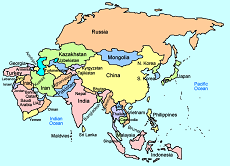
In light of trade wars around the globe, and the subsequent economic turmoil they’ve caused, an increasing number of countries are turning towards protectionism.
While some international partnerships, including the Transpacific Partnership (TPP) as well as the Transatlantic Trade and Investment Partnership (TTIP), have been stalled or reversed, one trade bloc has emerged triumphant – almost.
Ministers from the 16-nation Regional Comprehensive Economic Partnership (RCEP), which includes China, Japan and India and other Asia-Pacific countries, are ironing out their last and finest details, with the hope that a deal can be signed in early 2019.
It is hoped that the final agreement will also include the 10 members of the Association of Southeast Asian Nations as well as South Korea, Australia and New Zealand. In this case, the bloc will represent almost half of the world’s population, a quarter of world exports and a third of its economy.
So far, the members have agreed on four of 18 areas, which are economic and technical cooperation, small and medium-size enterprises, customs procedures and trade facilitation, and government procurement. Areas yet to be agreed upon include trade in goods, competition, investment, intellectual property and e-commerce.
As protectionism concerns increase around the world, the countries in the bloc hope it will allow them to fly the flag of free trade between ASEAN countries, China and India. It also aims to strengthen trade partnerships and enhance free trade and investment between its members.
Experts say politicians and international business shouldn’t underestimate the impact RCEP will have, even if it does just appear to strengthen existing agreements rather than create entirely new ones. The deal is set to underscore China’s role as a leader of the global economy, particularly when it comes to economic openness.
If it succeeds, RCEP will become the world’s largest trading bloc. But there are still a few unresolved details which are holding the process up. For example, India has so far shown a reluctance to open its market, particularly to goods and services from China. The country has now brought in three think tanks to help with negotiations on issues including goods, services and investment.
India also had a $51 billion trade deficit with China in 2016/17 and the country is concerned that decreasing tariffs for China would lead to Chinese goods flooding the market and widening this trade deficit.
A bigger issue is the wealth gap between member countries, which includes Australia at one end of the wealth scale and Cambodia at the other. These gaps may prove difficult to bridge, but experts are optimistic that the bloc will help narrow these gaps.
The bloc has been a long time coming – the members held their first round of negotiations back in 2013. Ministers from the various member states have been urged to look at the long-term impacts of the bloc when negotiating.
If you’re looking at how to expand business operations into a new and unfamiliar market, you may want to consider getting advice and support from international expansion experts such as Galvin International who can help you through every step of the process.






